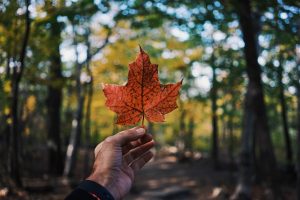Nunavut encompasses over one-fifth of the total land area in Canada. It spans 2 million square kilometers and covers three distinct geographical regions: the High Arctic Archipelago in the east; the mainland’s arctic tundra in the south; and the boreal taiga in between. Its capital city is Iqaluit. The population is mainly Inuit but also includes some First Nations peoples as well as immigrants from around the world.
Nunavut has an interesting history with regard to colonization by Europeans during the 19th century. Regards to self-governance were established in 1999 as part of an effort by First Nations and Inuit Canadians to gain greater autonomy over their own lives and traditional territories than had previously been granted by the Canadian government.
This autonomous region consists of 25 communities with a population of about 36,000 people or roughly 1% of all Canadians being represented by three Inuit territories across northern Canada: Baffin Island, Keewatin/Broadview, And Victoria Island.
What Makes Nunavut Stand Out?
Despite its size and remoteness, Nunavut stands out among other regions on the north coast of Canada due to its rich cultural heritage which reflects both Inuit and European influences. For example, while most Indigenous Canadians speak several traditional languages such as Cree or Ojibwa, almost 85 percent of Nunavut’s population speaks only Inuktitut, an official language since 1999 – along with English or French.
Another uniqueness regarding Nunavut comes from its environment which sees temperatures below zero for up to nine months out of the year with southern areas being slightly warmer during summer months making it ideal for outdoor recreational activities such as fishing, hunting, and snowmobiling just to name a few!
Last but not least; it has some remarkable geological features unique among other parts of Canada including wildlife like musk oxen roaming freely throughout tundra fields plus vivid night skies displaying spectacular auroras more often than elsewhere due Northern Magnetic pole located near Ellesmere Island just offshore from Inukshuqtuuq village there!
Here are 10 things you didn’t know about this incredible northern landscape:
Interesting Landmarks
In terms of notable landmarks within Nuvanutt, there certainly is no lack of them! The first prominently famed spot is definitely Mount Thor, one of the tallest single vertical drops anywhere world boasting a staggering 1200m drop off a face cliff straight down into the sea making it quite a sight behold for adventurers looking to take a picturesque hike up peak during summer months.
The Pingualuit Crater located in North West Ausuittuq National Park formed more than 2000 million years ago after an incoming meteorite collided against the earth’s surface creating a large splash effect visible today! Lastly, we have Cape Dorset’s iconic namesake home to many valuable archaeological finds such as ancient carvings and stone tools that date back thousands of years ago providing insight into life in pre-colonial times and regions holding important lessons modern society continues to learn from them too!
Unique Cuisine
The culinary scene within Nunanvutt isn’t particularly well known outside its borders but locals enjoy traditional dishes called “muktuk” which contain pieces of wild game like whale blubber berried plants harvested nearby wilderness served not only a nutritious meal but also symbolizes family connection past generations who used hunt fish survive harsh conditions without any access commercial food sources other popular choices include bannock bread smoked caribou smoked salmon soups made using muskox broth seal fat etc.
Unusual Wildlife
Since much area is still untouched extreme weather conditions make it difficult for humans to visit many places within the region thus creating a unique ecosystem full of different species of animals living without interference from outside influences Some notable examples include polar bears narwhals walruses beluga whales arctic hares foxes white wolves even bowhead whales recently returning waters coastal community Uchararvik after nearly two centuries absence!
Traditional Music/Art
The culture within Nuvanutt has been influenced by a great understanding of human needs expression art music From storytelling performing arts come alive dancing singing drums voices come together to form powerful reminder traditions local inhabitants followed through generations before us Not only that but exhibit very strong influence upon contemporary art movements aboriginal groups may produce sculptures pottery jewelry is woven items paintings prints showcasing thematic designs recognizable anyone living close enough.
Fascinating Inuit Myths and Legends
The Inuit people of the region have an extensive history of oral storytelling, which has been passed down for generations. These legends often tie back to the mythology of the area, recounting stories about how animals and land were formed, tales about powerful spirits and monsters from the sea, or even explanations of why certain natural occurrences happen within Nunavut. One popular tale is that of Sedna, a powerful sea goddess who is said to control all creatures in the ocean. Another fascinating story involves two giant wolves called Amarok and Ookpik –– an evil spirit creature who was believed to steal away children in the night!
Language of the Region
One thing that makes Nunavut stand out among its Canadian brethren is its language. It is home to three main dialects: Inuktitut (the official language), English, and French. While many Canadians speak primarily English as their first language, most Nunavummiut people are able to communicate in both Inuktitut and English due to initiatives taken by local governments to promote bilingualism in early childhood education. In addition, there are numerous other languages spoken across this vast region including Iglulingmiutun (West Greenlandic) Eskaleut (Yupik) Dene Taloyoakitee (Inuvialuktun-Siglitun), Kivallirmiutunnatune Patlualumiutunnatune Aivilimmiuniit; each with distinct features such as pronunciation lexicon tone etc.
Celebrations of the Region
In regards to celebrations they often revolve around special occasions like Christmas New Year birthdays anniversaries weddings but also take time to celebrate rich culture can have fairs and concerts where locals share experiences through dancing singing folk music igloo building contests traditional foods much more Fun fact – one longest running festivals known ‘Toonoonik Tulafono’ which takes place during April each year involves interesting mix activities like snow sculptures dog sled racing ice skating dancing lessons throat singing competitions art exhibits showcasing local talent craftsmanship alike!
Ancient Trade Routes
Nunavut was once part of a network of ancient trading routes that stretched across much of northern Canada. This route was used by Indigenous peoples for trading goods between distant communities without having to travel too far from home. Remnants of these trails still exist today and many archaeological sites in Nunavut provide evidence of life long ago when these routes were used regularly, giving us insight into what life must have been like before colonization changed everything forever!
Rich Culture
Traditional culture is very important in Nunavummiuq life. Most households practice some form of customary law while others may embrace cultural values that are passed down through generations such as respecting elders or hospitality towards visitors This can be seen in community gatherings held throughout different parts territory so everyone can come together to celebrate special occasions promote sense unity peace amongst everyone involved Similarly these customs also encourage sustainable use resources available ensuring future generations benefit just many present-day ones do same time!
Environmentally Sustainable Practices
As mentioned before much investment goes into promoting sustainability efforts within Nuvanutt this includes economic development incentives for businesses along with social programs aimed at helping those less fortunate than others Environmentally speaking considerable investments are made in maintaining the environment’s health regulating pollutants preserving habitats fragile ecosystems thirdly energy efficient practices adopted to reduce carbon footprint combat climate change overall maintain balance nature even though the more challenging task is given extreme conditions living here nevertheless accomplished remarkable ways thus making example rest follow indeed admirable one should give credit where due admirable job done by locals pushing forth ambitious goals via small scale yet effective means making a huge difference when comes local population’s quality life!
Conclusion:
Nunavut is truly a special part of Canada and its rich culture presents endless opportunities for exploration, learning, and growth. From ancient trade routes to unique wildlife and tasty cuisine, there’s something here for everyone! For those looking for incredible places filled with wonderment and surprises then look no further than Nunavut: Canada’s beautiful northernmost province!



